TAIF-NK: development indicator of petroleum refinery of Tatarstan
Having big reserves of crude hydrocarbons and being a leader concerning the volume of petroleum extraction, Tatarstan simply had been supplying raw material resources to other regions and countries during many years. The absence of a full-fledged petroleum refining sector did not have a positive impact on the economy of the region. The first people who realized the idea of construction of the full-fledged oil refining plant were the specialists of TAIF. In this issue of the special project TAIF-25 dedicated to the anniversary of the Group of Companies we offer our readers to know what indicators a 100% subsidiary TAIF-NK has today, 18 years after, taking the eighth position among petroleum refining plants of Russia regarding oil conversion rate and when the construction of the century, the erection of a new industrial complex begins, and other facts.
Growth points
The necessity of the construction of their own petroleum refining enterprise arose in the republic with the beginning of the industrial development of petroleum fields. The initial plan was being elaborated in the 1940s upon the government of the USSR. But in 1997 the specialists of TAIF were the first who realized the idea of construction of the full-fledged petroleum refining plant based in Crude Oil Distillation Unit, which was almost the most difficult for the petroleum extraction industry: world prices for petroleum fell to an all-time low. But the situation made them act decisively: firstly, they needed to continue to provide the active petrochemical enterprises of Nizhnekamskneftekhim PJSC with necessary volume of the raw material, straight-run gasoline, secondly, a demand of Tatarstan for jet and diesel fuels corresponding to the requirements of the Euro standard increased.
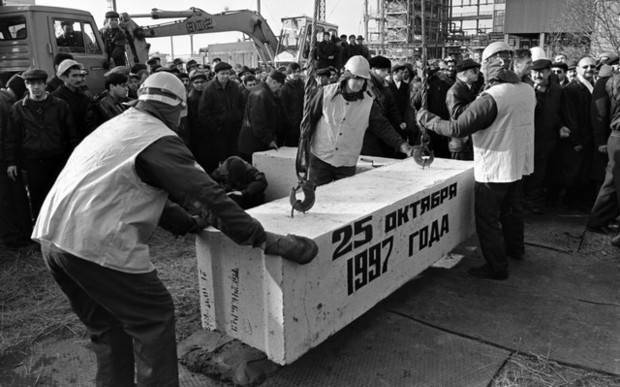
TAIF leased an ELOU-AVT-7 Crude Oil Distillation Unit of Nizhnekamskneftekhim PJSC, which had old equipment, and registered TAIF-NK, an subsidiary, in the industrial site of Nizhnekamsk in order to embody the ideas. Oil conversion rate of the equipment did not exceed 35%. TAIF-NK modernized it with the intention of avoiding problems with the quite old equipment, which was the base of the engineering plan. The reconstructed ELOU-AVT-7 is the first technological link of the basic complex of the Petroleum Refining Plant. And the results of the modernization didn't detain. Next year the quantity of petroleum refinery was increased to the full capacity of the equipment. The production of light petroleum products, diesel fuel and straight-run gasoline, in particular, was augmented.
Preventing the consequences of the crisis in the economy in 1998, TAIF supplied refined petroleum products for the needs of agriculture and industrial establishments on credit at below-market prices. 'Having supported petroleum, agriculture and power engineering workers, TAIF accepted extreme loads. Having mobilized all our strength and opportunities, we managed to work profitably,' Albert Shigabutdinov, the director general of the holding, remembers.

Breakthrough
The Petroleum Refining Plant of Nizhnekamsk is not just a large investment project. It is the project that made a breakthrough in the industry of Tatarstan. TAIF PJSC, Nizhnekamskneftekhim PJSC and Tatneft PJSC joined with the aim of completing such a large-scale construction.
In 2005, TAIF PJSC compensated the expenses of Nizhnekamskneftekhim PJSC and Tatneft PJSC on the construction of the Middle Distillate Hydrotreating Complex, Visbreaking Unit, Unit of Unoxidized Asphalt Pavement Production, Jet Fuel Preparation and Storage Unit and Sulphur Storage Tank. 'This step was the first stage of creation of the full-fledged petroleum refining plant in our republic, and we created it exceptionally in the interests of Tatarstan,' says the director general of the holding.
By this time, oil conversion rate reached 63%. TAIF-NK focused on further modernization and development of the PRP. The project comprised the Middle Distillate Hydrotreating Complex, Visbreaking Unit, Vacuum Block, Asphalt Block, Bitumen Unit and Claus Sulphur Recovery Unit. The composition of every project consisted of extensive infrastructure on the provision of storage and offloading petroleum products and modern environmental facilities.
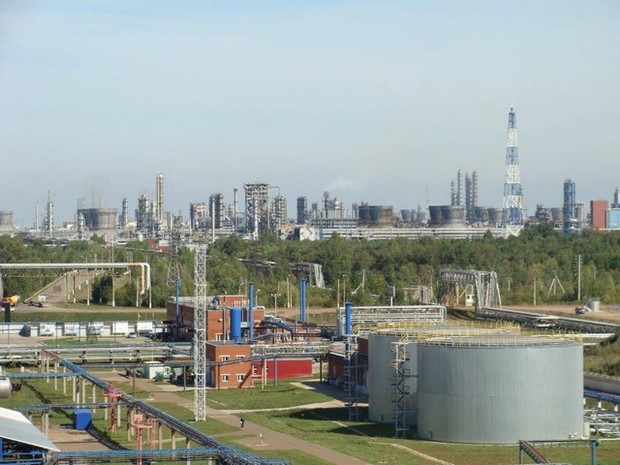
How to save $520m
In the first instance, the product line of TAIF-NK was very short: straight-run gasoline and high-sulphur boiler fuel. A course for the deepening the petroleum refining and increasing its volumes was set over time. In 2003, a construction of two large-tonnage productions began along with modernization and development work of the PRP: installation of the gasoline production unit and the natural gas liquids processing unit. Both of them were put into operation in winter 2005. And in several months, they produced the first consignment of gasoline corresponding to all rate requirements. 'By the way, Gasoline Plant, in fact, is a powerful unit catalytic cracking unit. The first offers of the companies that wanted to take part in our projects were equal to $650m. We worked on the project from 1997 and started its realization in 2003. We realized it at $130m. No one believed that it was possible, but we did it,' tells Albert Shigabutdinov.
In 2006, the total feed capacity of the enterprise increased by 1m tonnes a year owing to the fact that a new Natural Gas Liquids Processing Unit reached the rated indicators. And by 2007 the company expanded its range of products: petrochemical feedstock, jet fuel, technical kerosene, diesel fuel and Euro-2 and Euro-4 automobile fuels. In 2008, TAIF-NK was one of the first enterprises of Russia that completely changed over Euro-4 automobile fuels.

Today there are two large blocks in the structure of TAIF-NK. The Petroleum Refining Plant is the first one, which consists of ELOU-AVT-7 Primary Petroleum Refining Unit; Middle Distillate Hydrotreating Complex that is able to process over 600,000 tonnes of straight-run gasoline a year with the help of AB Lummus global technology to produce jet fuel and manufacture 2,3m tonnes of middle distillate using SHELL technology (1,4m tonnes before he reconstruction) for Euro-5 diesel fuel; Visbreaking Unit, which processes heavy residues of petroleum conversion into naphtha and mazut and bitumen production based on Biturox. The second block is Gasoline Plant that include the Catalytic Cracking of Vacuum Gas Oil Unit, Natural Gas Liquids Processing Unit and High-Octane Gasoline Component Unit (MTBE and TAME). Today oil conversion rate reached 74,5%.
A solid foundation for 'heavy' refining
Nowadays the completion of the construction of the Heavy Residues Deep Conversion Complex (HRDCC) and putting it into operation is the main development project of the TAIF Group of Companies. In late autumn 2012 works on signing contracts on projection, equipment supply and construction began in Nizhnekamsk. It's first in Russia and the largest production in the world based on Veba Combi Craсking (VCC) technology licensed by Kellogg Brown & Root LTD. On the basis of the same technology, the construction of not big, less powerful concerning the amount of processed raw material factories in comparison with the plants in Nizhnekamsk was completed in China. In addition, the basic projection of the unit was carried out by Kellogg Brown & Root LTD. The contract for detailed projection, production and delivery of the equipment for VCC unit was made with Mitsui & Co Toyo Engineering Corporation (Japan). Equipment for the units of the complex was supplied within the scope of the contracts for the delivery by the developers of the projects: KBR (USA), KNM Process Systems (Malaysia), Linde AG (Germany).
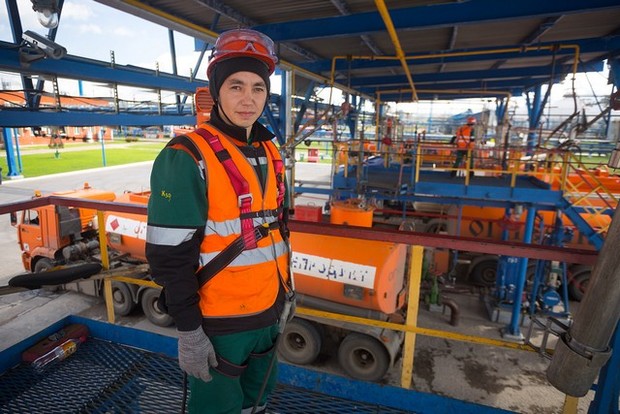
However, it was preceded by a plenty of work. The specialists of the GP looked for the technologies of heavy residues conversion from 2004. The most active search for the technologies was in 2009-2011. They studied the methods of tens of leading factories and technologies worldwide. In the process of the search for the reasonable technological scheme of the complex technical-economic justifications of the HRDCC were elaborated: ABB Lummus Global Inc, Giprokauchuk PJSC (1999), FOSTERWHEELERFRANCE (2001-2005), LGEngineering&Construction (2004-2005), VNIPIneft PJSC, VNII NP PJSC (2006), GS Engineering&Construction (2006-2007), Chevron Lummus Global LLC (2007), Chiyoda Corporaition (2007) and Lurgi AG (2007). And the final choice was made in 2011.
In general, VCC technology has been existing since 1930 and was elaborated in Germany for processing hard coal into automobile gasoline under the pressure of 750 atm. Later this technology, capable of processing a wide range of heavy feedstocks under high pressure, was forgotten: at that time they extracted enough light petroleum, and production of light petroleum products from them did not require any special technologies and, what is more important, it cost less. However, at the early noughties, having renewed this technology, British Petroleum returned to it, as a result of which it became possible to convert heavy feedstock under lower pressure – 210 atm. In 2010 BP transfer a right to KBR (USA) to the licence and technology distribution worldwide.
Today the work on the construction of the HRDCC on the building site are in the process. For last year of active construction work in the HRDCC, over 23,000 tonnes of metal constructions were erected, more than 160,000 cubic metres of asphalt were laid and over 290 units of different equipment were installed. Generally speaking, approximately 70% of the assembly of metal constructions and equipment for VVC unit was completed. More than 3,400 experts of Russian foreign assembly organizations are engaged in the construction of the complex.

The most dramatic event from the beginning of the construction of the future complex was in September 2014 when the heaviest freight, a hydrocracking reactor (40m length), was delivered to the building site. Its transfer from India to Nizhnekamsk was a new world record of the Guinness Book of World Records. No gigantic freights of such a weight (almost 1,400 tonnes) had never been ferried across rivers.
The geography of producers of equipment for the HRDCC is worthy of attention: the companies well-known all over the world with a great experience in the production of equipment for construction of the largest petroleum refining and petrochemical units in the whole world.
For example, the reactor equipment was produced by Larsen & Turbo (India), the unique piston compressor – by HTC (the Netherlands), the centrifugal compressor – by Hitachi (Japan), the licensed separator – by ATB RIVA (Italy), the column equipment – by Doocan, Wooyang and DKT (South Korea), high-pressure pump – by Flowserve (the Netherlands), EBARA (Japan) and PERONI (Italy), air-coolers – by KHE (South Korea).
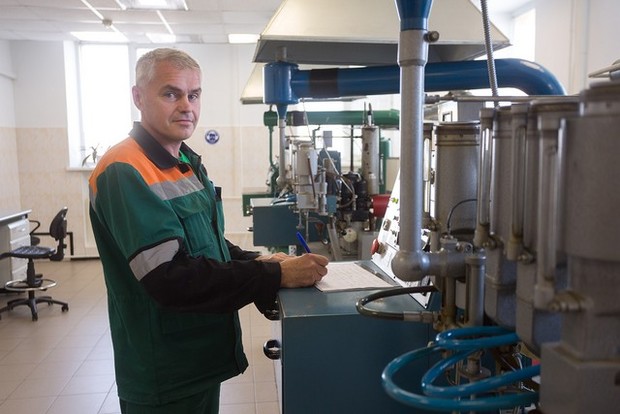
After three-stage conversion of heavy residues into synthetic fuel with the help of VCC technology, which will make 95%, the product will be exposed to standard hydrocracking in the fixed bed of catalyst. Light petroleum products, which are very profitable, are the end result of the process: naphtha, kerosene, Euro-5 diesel fuel, purified vacuum gas oil, which is the main feedstock for production of Euro-5. According to calculations, their further realization might bring TAIF-NK practically a double increase of the profit in the refinery of the same 8,4m tonnes of petroleum a year. The process of petroleum refinery will be close to the wasteless approach. And in the enterprise there will be about 700 new highly paid jobs. The future complex will allow to increase the production and realization of straight-run gasoline, liquefied petroleum gas (feedstock for production of ethylene and rubber of the enterprises of the petrochemical complex), to increase diesel fuel production corresponding to the Euro-5 eco-standard and improve the environmental situation in the region. The uniqueness of the HRDCC resides not only in its technology but also in its minimal impact on the environment. All environmental factors, standards and requirements that to the industrial enterprises of Russia were taken into account by the leading international engineering companies in the early stages of projection. Biological wastewater treatment facilities will help to support the high eco-standard of the new factory. Their modernization is being held along with the construction of the HRDCC.
Today's realias
For the successful realization of the project, which is very important not only for the republic but also for the country, needs a serious financing. At the beginning of the year, TAIF-NK ran a campaign on the attraction of bank funds for the completion of the construction of the century at $1,7bn. And 53% of them are paid by means of their own funds. Very important credit agreements were signed in summer 2014. For instance, Alfa-Bank granted TAIF-NK $600m for 5 years. Moreover, TAIF-NK PJSC and Raiffeisen Bank International AG signed a €60m long-term credit agreement for 8 years insured by Euler Hermes Export Credit Agency. The financing will enable the company to assuredly complete the capital-intense project to the deadline – by autumn 2016. By this time it is planned to build a number of establishments of the site utilities and reconstruct commodity storages besides technological units.
Having reached oil conversion rate, the main indicator of the operational and technical efficiency, of 74,5%, TAIF-NK takes the eighth position among petroleum refining plants of Russia. Due to the fact that an average load of productive capacities was equal to 100,93%, according to the results in 2014, they produced and realized goods at 132bn rubles and the net profit made 10,7bn rubles. Their successful operational activity had a direct impact on financial results of the work. EBITDA indicator increased by 10,6% – to 15,9bn rubles. In addition, TAIF-NK paid taxes and duties equal to 61,7bn rubles to all budget levels, including 4,1bn rubles to the budget of Tatarstan. It should be noted that tax payments grew by 9bn rubles, that is to say, by 17% compared to the previous year.
The progressive development of TAIF-NK, which is demonstrated from its foundation, aimed at the satisfaction of a great part of the growing demand for the refined petroleum products. If 4,8m tonnes of petroleum products were exported in 2013, the result in 2014 shows that this figure increased to 5,3m tonnes. The development programme on the retail chain of petrol stations of TAIF-NK was continued last year as well. Now the petrol stations number 38 units.
TAIF-NK refines 8,4m tonnes of petroleum and natural-gas condensate annually producing 2,5 tonnes of black petroleum products that account for the third of the whole volume of commodities. Then they will be sent to the HRDCC for further refinery into light petroleum products. Special high-porous additives have a significant role in this process.
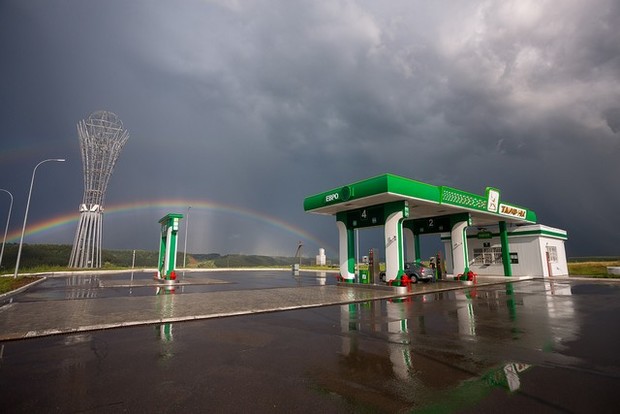
TAIF-NK has a number of fundamental differences from other petroleum refining plants of Russia. The vast majority of petrochemical factories in the country are designed for the production of motor fuels only. TAIF-NK works in two lines: provides a high-quality raw material for the petrochemistry and produces fuel of no less top quality. At the same time, the enterprise is one of the several refiners of the heaviest high-sulphur oil in Tatarstan and Russia. Mintimer Shaimiev, the first President of Tatarstan, mentioned this theme in his interview dedicated to the 25th anniversary of the holding saying that, 'TAIF is sitting on a powder keg'. It means that high-sulphur refinery leads to unrestricted and uncalculated wear. 'Why do they deal with high conversion rate and new technologies? Because their equipment is easily worn out. I understand them, they run a risk though investing huge funds. Otherwise, the dilemma is whether not to live or not to live for a long time,' Mintimer Shaimiev explained.
The active position of the company aimed at an up-to-date modernization and development of factories of the Petroleum Refining Plant and Gasoline Plant allows TAIF-NK to increase volumes of crude refinery and raise its financial results strengthening the economy of the region by means of progressive realisation of the organized development strategy despite uneasy external factors.
Photo: press centre of TAIF PJSC